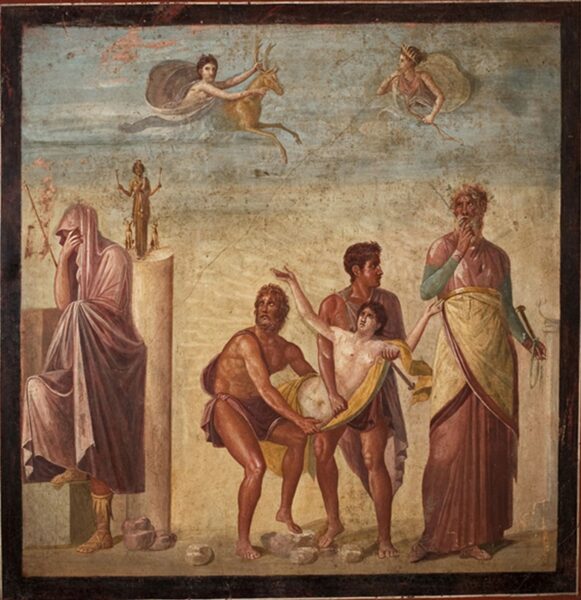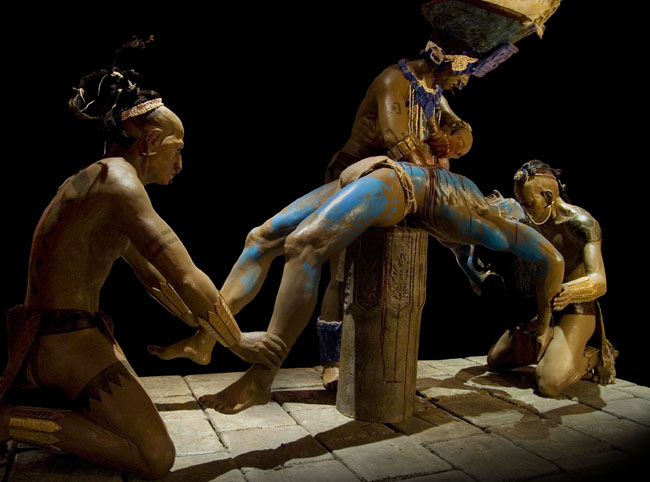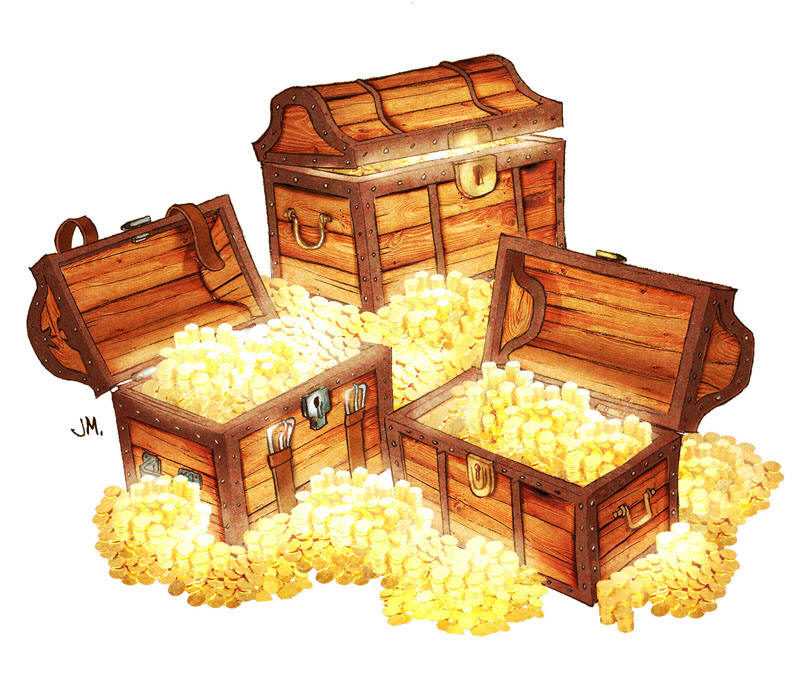MYTHS, LEGENDS AND SUPERSTITIONS: BETWEEN SACRED AND PROFANE
"TRUVATURE" AND BUILDING SACRIFICES IN THE ANCIENT COUNTY OF MODICA
I believe that despite the technology of the robots of the information highways, the memory in popular memory of the enchanted treasures (the truvature) and the strange rituals necessary to disenchant them is not yet completely extinguished.
The South, and in particular Sicily, is rich in folk tales concerning the truvature. The more misery is daily reality, the stronger is the desire for destiny to resolve our daily problems in an energetic and definitive way. Many know this, especially those who, from this desire for economic redemption, manage to derive a source of income, and so scratch cards, football pools, lotto and lotteries of all kinds, proliferate, forgetting that for every lucky one who laughs, a hundred others they will mourn the increased misery.
Maybe it was better once, when instead of the lotteries there were the enchanted treasures waiting to be taken by the chosen ones of destiny. It mattered little whether to "disenchant" (or untie) the treasure from its truvatura it was necessary to use the strangest, most ridiculous, sometimes dangerous and often criminal expedients.
Among the strangest and most ridiculous rituals is perhaps the one necessary to take possession of a treasure located in an unspecified location in the County of Modica, where it is necessary to undress completely naked, lie down on the spot in mouthfuls, light three candles around the treasure, holding a dead mouse and in the other a snake also dead and as if that were not enough, you have to remain motionless for three hours, from eleven in the evening to two in the morning, without being afraid of noises and apparitions and imitating the crowing of the cock and recite a conjuration that hardly anyone knows.
Popular fantasy has no limits, sometimes more than ridiculous rituals can the rituals that see involuntary actors, sacrificial victims, and I would like to focus on the latter, as I think it is possible to identify links between the facts of blood in a syncretic key. linked to some truvature (and perhaps the most ancient form of human sacrifice) that relating to the so-called "building sacrifices" in which, on the occasion of new constructions, the victims were buried under the structures of the new building.
Archaeological finds testify to the presence of building sacrifices among the prehistoric peoples of Europe. The barbaric custom was slowly abandoned, or in any case replaced with simulacra that made the rite assume a purely symbolic character.
Building sacrifices were had, for example, with the Celts; Vincenzo Mancini, in his book "Human sacrifices and ritual murders of antiquity", referring to the legend of S. Colombano, reports that he asked the population that a volunteer would offer himself so that his body consecrated the place where the church should have been built :
<< Odharano got up, saying: If you accept I am ready. Columkille replied: O Odharan, you will have your reward; no thanks will be granted to anyone until he asks for you. Odharano went to Heaven. Columkille founded the church of Hy in that place >>.
Testimonies of building sacrifices also come from the Bible; in the Book of Kings 1.XVI, 34 there is mention of a certain Hiel of Bethel. Who rebuilt Jericho at the time of King Ahab and founded it above his eldest son Abiram, also married under the gates of it, Segub, son of Num. And to confirm this custom, in 1907, the German society for archaeological excavations in Palestine he discovered under the walls of Mageddo (Biblical city already uninhabited at the time of Christ) the skeleton of a child of about 15 years.

The mummy of a little girl sacrificed by the Incas
In the Sicilian popular tradition, traces of human sacrifices that recall the ancient building sacrifices are found regarding the modalities that in some cases must be adopted to take the money of the enchanted treasures. In fact we want to believe that, in some cases, the spell can be removed with a new tribute of blood (it is no coincidence that the popular philosophy "sangu calls sangu" has always been rooted in Sicily.
The victim "tied" to the enchanted treasure is destined to guard the "truvatura" just as the sacrificial victim of building sacrifices guarded the building to which it was also tied.
Sicily is rich in these beams. A boot full of gold coins is buried in a mountain near Capaci. Whoever leads and slaughters a man in the place where this treasure is buried can take it.
Another enchanted treasure that demands the same blood toll is found not far from Caltabellotta; in the nearby "Monte Calvario" there is a cave that will offer its treasure to those who pour the blood of a slaughtered man inside. Sometimes a single victim is not enough, as in the case of "La Montagna del Furore" a mountain near Naro (Agrigento) where an immense treasure is hidden. To disenchant him, seven innocent children must be sacrificed on the spot.
But even in the Hyblean land there is no lack of truvature of this kind. In the S. Lena quarry, not far from Chiaramonte, a flock of gold grazes. The flock can be appropriated if a man is killed on the spot on Good Friday.
Giuseppe Pitre in his book: Uses and customs and prejudices of the Sicilian people (p.436) published in 1889, speaks of a church in the territory of Modica called the Church of Scrofani, where there is an enchanted treasure.
To take this treasure it is necessary to kill a child who has the name Clement, and to kill him must be the godmother who has to eat his liver on the spot.
And someone must have tried; in fact the writer Serafino Amabile Guastella in a letter addressed to Pitre, told of a trial that took place a few months earlier in Modica concerning the following bloody event that took place in the aforementioned church: a woman, who had a two-year-old godson named Clemente, took away the little one, unbeknownst to his mother and accompanied by another accomplice, they entered the church; the two women killed the child in the slab which, according to the people, hides the treasure and tore out his liver. But they were unable to eat it raw, in fact they vomited a little, and the treasure could not therefore be disenchanted ".
The Medican episode highlights another very ancient habit, that of eating some parts of the body of the sacrificial victims. Diodorus Siculus (Lib.XXII.5) speaking of the tyrant Apollodorus who in 279 BC conspired to become tyrant of Cassandra (the city founded by Alexander on the northern coast of the Aegean) says:
\ uXNUMXlt; \ uXNUMXlt; and wanting to make sure the outcome of his conspiracy, he called a young boy, his friend, as if for a sacrifice, he slaughtered his throat as an offering for the gods, gave it to eat the entrails to the conspirators, and, mixing its blood with wine , made them drink >>.
Just as the ancient rituals in which human sacrifices were required were transformed, and animals and no longer men paid the price of human stupidity, also for truvature we are witnessing a similar phenomenon, in which however the ancient habit of feed on the victim.
An ancient popular belief in Modica, believes that some women can "untie" a treasure, cooking a bat under their own skirt, inside a warmer full of charcoal, and eating it whole without having removed the entrails. Another method, less disgusting, always medicate, to take possession of a treasure is to crush three lice taken from one's chest on the slab that hides the treasure. The problem is not so much finding the lice to put on the chest as knowing where the treasure is.
 The sacrifice of Polyxena
The sacrifice of Polyxena
And in a land of faith the religious element could not be missing; also the Modican tradition tells that Bernardo Cabrera buried a golden goat in a cave on the top of a mountain near the Irminio. The cave then took the name of "Cave of the Golden Goat". To untie the treasure it is necessary that three priests from three different municipalities, who have the same baptismal name and the same years, enter the cave, slaughter a beak and each of them drink three drops of blood: only then the buried golden goat from the Cabrera it will rise from under the ground bleating

Fresco depicting the Sacrifice of Iphigenia House of the Tragic Poet, Pompeii
 Maja: Human sacrifice
Maja: Human sacrifice

MYTHS, LEGENDS AND SUPERSTITIONS: BETWEEN SACRED AND PROFANE


